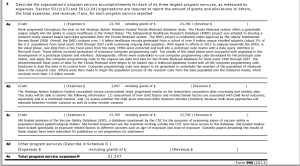Last weekend I was having lunch with my kid. Yes, we interact a great deal in these lunches but, yes, I also take some time to read. I was re-reading Steve Silberman’s book Neurotribes. There is a great deal of discussion in Neurotribes of people who changed how we understand what autism is, as well as how we (we =autistics and non autistics) relate to autistic people. Much of this comes out in one of the last chapters, where the discussion of how the film Rain Man came to be produced. Two of the many names that came up were Lorna Wing and Ruth Christ Sullivan. Both were parents of children with very high support needs. Especially in their time, the people involved in shaping the understanding of autism and autistics were largely parents.
Both Wing and Sullivan had children with high support needs. And, yet, Wing was instrumental in bringing about the understanding that autism is not just about people who were like her child. Wing brought the work of Hans Asperger from out of obscurity. None of this “not like my child” stuff. Sullivan helped found the National Society for Autistic Children (what we know today as the Autism Society of America). She was lobbied to get special education passed in the U.S..
And as I read about them, again, I was struck with, “I never wanted to be a part of advocacy. I just want to live my life with my family.” I want to quietly eat lunch with my kid and read books, and probably not autism related books.
It wasn’t until later that a few things dawned on me.
I was sitting in a restaurant, having lunch with my kid. A kid who is very, very clearly autistic. And who was being very, very obviously autistic. Something Lorna Wing and Ruth Christ Sullivan almost certainly couldn’t do. And something that is only possible now because people like them (as well as many others, including autistics) accomplished in acceptance.
Seriously, in their day I would have been asked to take my “retard” kid out of the restaurant and not come back.
I am able to sit in a restaurant because my kid attends an excellent school. I won’t go into details, but, yeah, good school = better life for all of us. And without special education laws that wouldn’t happen. And without the understanding of how to support autistics, brought about by so many that came before me, a good school wouldn’t even exist, law or no law. That school and our opportunity to send our kid there exists because of the hard work of so many people who came before me.
I’m no Lorna Wing. I’m no Ruth Christ Sullivan. I’m not one of the many autistics who have helped change the world–autistics who are “not like my kid” but who have, nonetheless, helped get my kid and me into a world where we can sit on a quiet Saturday afternoon and eat noodles. One of us being clearly autistic, and the other reading a book. And most of all, both of us welcomed.
So I’ll try to keep doing what I can to help keep progress happening.
—
by Matt Carey




Recent Comments